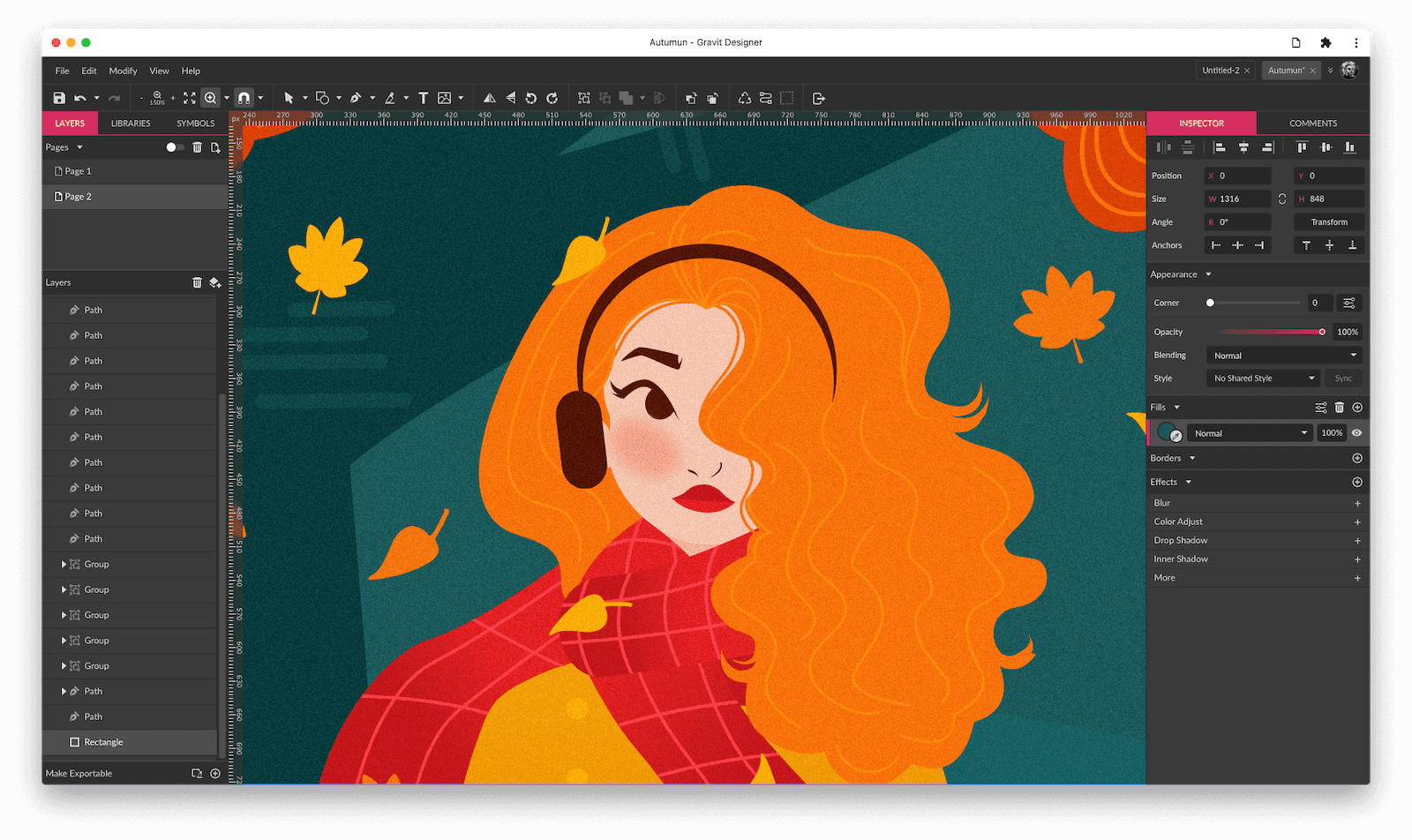PWA users are also 24% more active than all other install types, become repeats users 31% more than all other platforms, and more.
+24%
PWA users have 24% more active sessions than all other platforms
+31%
PWA accounts for 31% more repeat users than all other platforms
2.5x
PWA users are 2.5x more likely to purchase Gravit Designer PRO
Corel Corporation's Gravit Designer is a powerful vector design tool. With roots as a startup, Gravit Designer joined Corel's extensive product portfolio in 2018, and serves tens of thousands of daily active users demanding rich, affordable, and accessible vector illustration software. Corel builds a host of creative and productivity software including CorelDRAW, Corel PHOTO-PAINT, Corel Painter, Parallels, and more.
Gravit Designer's target audience is creators of all stripes - from students learning about vector illustration to seasoned designers looking for a fully-functional solution. Corel has always wanted to meet designers and creatives where they are, on their platform of choice, and Gravit Designer allows us to deliver powerful vector illustration tools via the web.
Progressive web apps (PWAs) are of particular interest to Gravit Designer and Corel's Online Graphics initiatives, as they help bridge the gap between web apps and traditional desktop applications. Progressive web apps are quickly becoming the preferred way to deliver desktop experiences for traditional web apps. ChromeOS and the Play Store also present a great opportunity to Corel by offering secure in-app payments, PWA support for bringing the web app experience to the desktop in a seamless manner (local font and file system access are particularly relevant for us), and most importantly, greater visibility to our web apps for more users. Students and educators can install the ChromeOS version of Gravit Designer with ease, and enjoy the same powerful features regardless of platform.

Engineering challenges
There are a great many engineering challenges with supporting multiple platforms, particularly web and desktop. In our case, we take great care when deciding to support a new platform, as our app began its life on the web. When supporting desktop platforms, we typically have to wrap our application in a supporting container, which brings its own set of challenges depending on the host platform.
Our users want an experience that carries over seamlessly from one platform to another. This is vital to many of our customers who might switch from web, to desktop, to Chromebooks, and back to web in the course of a design. Furthermore, our users want their work to travel with them, unencumbered by their situation. Whether on-the-go, offline, or connected to the internet, they want their documents accessible in the Gravit Cloud, for example.
At Corel, we have decades of experience porting software to many platforms and navigating the challenges therein. There is a balancing act in ensuring proper performance, feature parity, and platform-specific UI support. Gravit Designer is no stranger to these challenges.
Gravit Designer's desktop PWA
With some platforms, the answer will be wrapping a web app in a platform-specific container application for the foreseeable future (e.g. Electron). However, with PWAs and ChromeOS we can start to deliver on the promise of a web app ported to a desktop experience with minimal disruption.
For Gravit Designer, our team could see the growing value of PWAs, and made great strides to support it as an enabling technology going forward. The potential of several major platforms supporting PWA (namely ChromeOS, iOS, Windows, and more) could usher in a new era of cross-platform support for certain applications. Since Chrome was the clear leader in browsers among our users, and provided the best user experience for PWA, we decided to investigate the work involved in building out a PWA version of Gravit Designer.
The team began by first creating a proof-of-concept to understand the effort required. Next came the development effort associated with local font and local file system support. In the end, we had to stage our support for local fonts. Once improvements were made to file loading times, installation, and performance, we felt more comfortable moving past the proof-of-concept phase and targeting PWA support for a major release.
Impact
Since launching our desktop PWA, we've seen a steady increase in installations, and we're excited by the prospect of releasing the PWA version with enhanced platform-specific features for ChromeOS and other platforms. In fact, the standard PWA version of Gravit Designer now leads downloads from the Microsoft Store and Linux installations, so we're looking forward to even more growth.
Key figures
- 18% of total ChromeOS users have installed our PWA (PWA installs across all operating systems account for ~5% of our total).
- PWA users are 24% more active than all other install types (more sessions per user).
- PWA accounts for 31% more repeat users than all other platforms.
- PWA users are 2.5x more likely to purchase Gravit Designer PRO.
- PWA makes up about 5% of all new user accounts, and growing.
Summary
The growth of PWA installations in general-past other more established platforms-points to a future where we could offer a satisfying desktop experience without the need for platform-specific wrappers on a multitude of platforms. Our work with Google on PWAs and ChromeOS is vital to this aim, as more and more features are supported.

